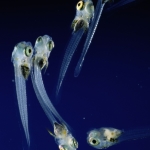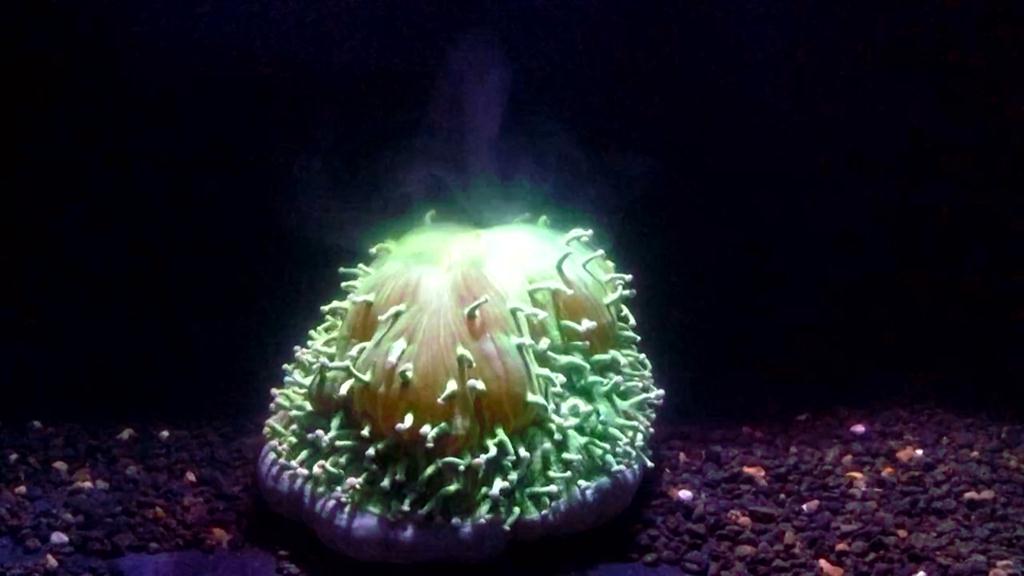
Fish larvae follow sounds to locate prime coral reef spots, a new study shows.
PHOTOGRAPH BY GEORGE GRALL, NATIONAL GEOGRAPHIC
It may not be obvious to us land dwellers, but ocean reefs are noisy places. They are the cities of the sea, with thousands of the residents talking at once. But researchers still are unclear how a fledgling sea creature finds its way to join the cacophony
Two scientists at Woods Hole Oceanographic Institution in Massachusetts sought to find out how far the noise of a reef carries, and whether it might be loud enough to attract the larvae of fish and invertebrates. Their answer? The reef sounds are unlikely to draw larvae from afar, but may help them locate the right neighborhood when they get close.
“It was a little surprising. We thought the sounds would travel somewhat farther,” acknowledged Max Kaplan, a graduate student at the Massachusetts Institute of Technology and Woods Hole and co-author of the study, published in the journal Scientific Reports.
Many fish and other reef species begin as eggs that drift in the open ocean. They have a seagoing stage of growth as larvae that may last for days or months before they need to settle down on a suitable spot. For decades, researchers believed larvae drifted helplessly and that landing on a reef was a matter of pure luck.
But recent studies have shown that many larvae have the ability to propel themselves. “Some have really strong swimming abilities,” said Kaplan.
And other studies have shown some larvae can make choices based on sound. Put in a tank with a choice of two swimming routes, the larvae of reef species disproportionately move toward a route that emanates reef sounds.
But in experiments at a Maui reef with specialized sensing equipment, Kaplan and his co-author, Woods Hole biologist T. Aran Mooney, found that most of a reef’s din produced a vibration in water—the mechanism most fish and larvae use to “hear”—that barely traveled 15 meters from the reef, and never more than a hundred meters at most times of the day.
“That’s not going to work if you’re a larva far away,” said Mooney. (See where corals are doing better than expected.)
Not Exactly a ‘Silent World’
There are plentiful sources of noise. “Some are grunts, some are knocking sounds, some are drumlike sounds [produced by muscles working the swim bladder],” said Kaplan. Some species like catfish can rub hard parts together to create noises. That communication may be useful in lots of ways: to scare off competitors, attract mates, stun prey, or avoid predators.
Humans hear little of it. A snorkeler over a reef will likely hear the crackling claws of tiny snapping shrimp, and maybe the munching of parrot fish, but little else. That’s our failing, saidMarc Lammers, an associate researcher at the Hawaii Institute of Marine Biology and head of the Oceanwide Science Institute in Hawaii. He was not involved in this study, but has worked with the researchers on other projects and has long studied acoustics.
“We were told by Jacques Cousteau that it’s a ‘silent world’ underwater,” said Lammers, referring to the title of the legendary scuba diver’s 1953 book. “But in reality, it’s the exact opposite.”
Human ears are built for catching pressure waves of sound in air, and they miss much of what’s going on underwater, he said.
“It’s like if you just went about your days with really, really good earplugs and formed your notion on what’s going on in the world. You’d hear some dogs barking, and louder sounds. But you would miss the morning chorus of birds,” he said. “Underwater you are clueless to the fact that all these sounds are happening.”
With the exception of large ocean-roaming mammals like whales and dolphins, most aquatic communication is made for close conversations to visitors or neighbors. Researchers are still puzzled at how larvae that may be floating a long distance from a reef find their way to a suitable home at the right time of their development. Theories include use of noise, sensing the chemistry of the water or the light, or by reading the tides.
“If you are a reef animal you have to find a reef to settle on,” said Lammers. (See photos of reefs.)
Mimicking Nature to Save It?
The success of tiny larvae affects the viability of the reef. “It’s important to have a broad, diverse, healthy community,” said Mooney. “The corals are the foundation of that. But you have to have fish that eat the algae that overgrow the coral. You have to have other predators that are eating those predators. You have to have the little shrimp that clean the coral. A lot of that is interrelated.”
That interrelationship has led to proposals for using sound to attract more larvae to repair ailing reefs, which are under stress worldwide from acidification, climate change, development, and pollution. “How do you make it sound like a place they would want to go?” mused Mooney. “You’d have to play it back at an awfully loud level” to get the sound to travel far, added Kaplan. (See the coral reef discovered in the Amazon.)
Lammers said the idea of using sound alone to rebuild a damaged reef “is a little far-fetched.” But as a declining reef loses biodiversity and “quiets down,” sound might be used to attract larvae to slow the process, he said. “We’re just now scratching the surface in finding out how important sound is.”

